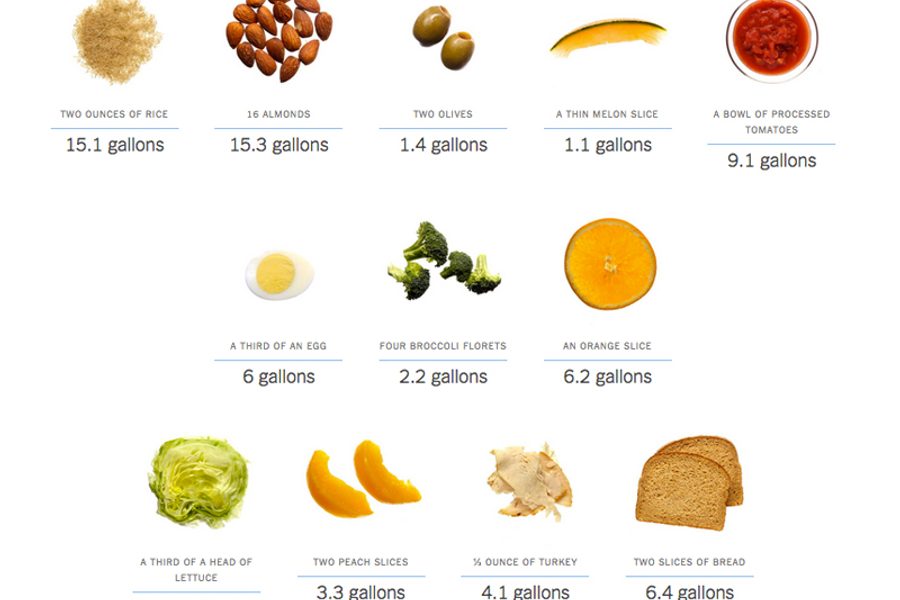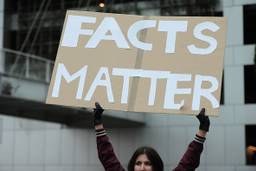Why Corporate Media Want to Blame California’s Drought on Your Eating Avocados
The New York Times is wrong: consumers eating grapes and mandarin oranges aren’t the ones really guilty of contributing to California’s water shortage.
Jim Naureckas

The New York Times has an interactive feature (“interactive” in the sense that some of the graphics are videos that you have to click on to play) about California produce and water. Its headline, “Your Contribution to the California Drought,” comes straight out of the text (by Larry Buchanan, Josh Keller and Haeyoun Park):
The portions of foods shown here are grown in California and represent what average Americans, including non-Californians, eat in a week. We made an estimate of the amount of water it takes to grow each portion to give you a sense of your contribution to the California drought.
But the headline is just plain wrong.
People eating avocados don’t “contribute” to California’s drought — even if a sliver of it takes 4.1 gallons of water to produce, as the Times tells us. California’s drought is caused by lower-than-normal precipitation coupled with higher-than-normal temperatures, not by people eating too many grapes (24 gallons for a bunch) or mandarin oranges (42.5 gallons for three).
A drought is not the same thing as a water shortage. If your city was getting plenty of rain but decided to open up its fire hydrants 24/7 and re-landscape its parks with the lagoon look, it could have a water shortage — but it still wouldn’t have a drought.
Now, California’s drought has caused a water shortage — and California’s agriculture uses 80 percent of the state’s available water. So would the feature be fixed with the admittedly less-catchy headline “Your Contribution to California’s Water Shortage”?
That would be more accurate — but still not very useful. For one thing, the feature is an awkward guide to buying low-water produce, since it’s based on both how much water crops use and how much people eat them on average. For example, a “thin melon slice” is a “water guzzler” at 1.1 gallons, whereas a “tiny pear wedge” is under “least water consumption” because it takes only 0.51 gallons. But is that because pears take less water to grow than melons, or because a thin slice is bigger than a tiny wedge? It’s impossible to say.
You can do the math and figure out that turkey actually does take less water to produce per ounce than beef — 12.3 vs. 49.1 gallons — but this may not be immediately obvious from the 1/3 ounce and 1.75 ounce portion sizes that the Times uses for comparison purposes.
But the bigger question is whether blaming consumers for California’s water shortage, and then implying that they ought to selectively boycott (or just feel bad about?) California produce based on its water consumption, is actually a smart approach. It’s very common for corporate media, which are driven by commercial advertising, to emphasize the importance of purchasing choices, thus framing social and environmental problems as a matter of personal virtue or guilt.
But as Think Progress noted in a piece on agriculture and California’s water crisis, it’s not consumer demand that has resulted in California growing so much of the United States’ fruits and vegetables — it’s government policy, including massive subsidies for corn (to be turned mainly into ethanol, corn syrup and animal feed) that have helped destroy once-substantial vegetable operations in the Midwest.
Shifting consumer preferences — assuming that the Times feature could steer eaters in a coherent direction — might encourage farmers to switch from one crop to another, redeploying their water allocations to whichever food products people are eating more of. But only a change in government policies can stop agribusiness from taking as much water as it can — and California Gov. Jerry Brown has so far shown no signs of interest in such a change. Absent collective action, the market has a powerful ability to adapt to — and thus negate — individual attempts to undo the damage it inflicts.
The same is true of your — and my — actual contribution to California’s drought, which is not eating almonds (even at 15.3 gallons of water per 16) but participating in an economy that injects vast amounts of greenhouse gases into the atmosphere, creating the changed climate that has led to the region’s worst drought in 1,200 years. Individuals can conserve energy, but without societal action to restrict the burning of fossil fuels, the reduced demand will just lower costs until someone is willing to make use of the supply. That’s what happens when “your contribution” is reduced to your consumption — as opposed to your participation in democratic action.







